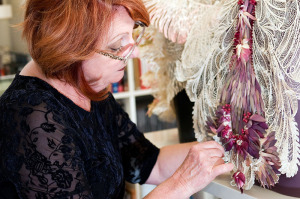my art of found objects
 ‘Much of my work has originated from found objects taken from the mundane and everyday objects around us. The term ‘found art’ generally describes art created from undisguised, but often modified objects that are not normally considered art, often because they already have a non-art function.
‘Much of my work has originated from found objects taken from the mundane and everyday objects around us. The term ‘found art’ generally describes art created from undisguised, but often modified objects that are not normally considered art, often because they already have a non-art function.
We often miss and overlook the aesthetic beauty and artistic possibilities in the simplest things that surround all of us. It is the challenge of the artist to reinvent and create compositions that appeal to our sense of balance, movement, colour and composition.
The idea of chance and random possibilities is partly influenced by the imagery developed by the Dadaists whose common theme was spontaneity and the bizarre. My digital compositions utilise chance combinations and communicate particular ideas and memories associated with that object. In varying degrees, these elements are transformed or simply placed together so that they retain a sense of their original function, but also take on a new meaning.
They can be reminiscent of fantasy or dream like imagery, but essentially rely on the viewer to construct meaning through their own memories or experiences.
Experimentation using digital media, Photoshop, cutting, reflecting, recolouring, distorting and patterning imagery into symmetrical and asymmetrical works, has aided this journey. Simple organic objects ranging from a cabbage leaf to a grape, a zucchini from my garden to a perfectly formed duck egg are manipulated to create intricate and detailed compositions that intrigue and challenge the observer.
There are recurring themes throughout my digital series that are not accidental but have been adjusted by means of colour, hue, shape and arrangement to reassign their identity. The overriding objective is to create numerous compositions by simply reusing these objects with careful reworking of the art elements and principles.
In the midst of this process of observation and searching I discovered the Watsonia bulb – a wonderfully intricate and delicate structure, so common to us all and often considered a weed by many gardeners. This was a pivotal time as my interest had now turned to three-dimensional works using these casings as the ‘fabric’ for so-called fashion pieces. The web structure on first sighting fascinated and intrigued me with its intricate structure and resilient form.
The effect is lace like and reminds me of the timeless lace designs of Belgian lace or the intricacy of the finest Victorian doily. Each casing is different, characterised by a varying cell structure or strength. The melding of the technology of computerised design with traditional cutting and pasting skills allows me the freedom to explore intricate designs such as that found in ‘Flight of Fancy’, 2013, winner of the Waterhouse Prize.
As artists we need to be multi-functional. Perhaps it is my teaching background where I had to be familiar with a range of media and new technologies in order to offer the best resources for my students. I am constantly inspired by the possibilities and challenges that new knowledge offers the artist.
The focus on the ‘natural’ soon expanded to include various other leaf forms and berries interwoven into sculptural pieces. I continue to be intrigued by the changing colours of the seasons and use drying methods to capture these hues in time thereby introducing colour as an integral part of my work.
Nature’s recurring seasons of growth, perfection, decline and renaissance are a gift to us all. The constant exchange of form and style in nature’s palette challenge the artist to create a canvas, rich with allusions and symbolism. Through the fragile complexities and nuances of delicate forms I get great satisfaction in celebrating and enhancing nature’s beauty.’
Judith.
‘Art and science naturally overlap. Both are a means of investigation and involve the systematic use of a technique or a skill and the testing of ideas and theories. Both artists and scientists study materials, nature and people to create something new. History proves that the two disciplines cannot exist without each other, enduring in constantly changing and evolving relationships.’ Eskridge, R. 2010. ‘The Enduring Relationship of Science and Art’.
